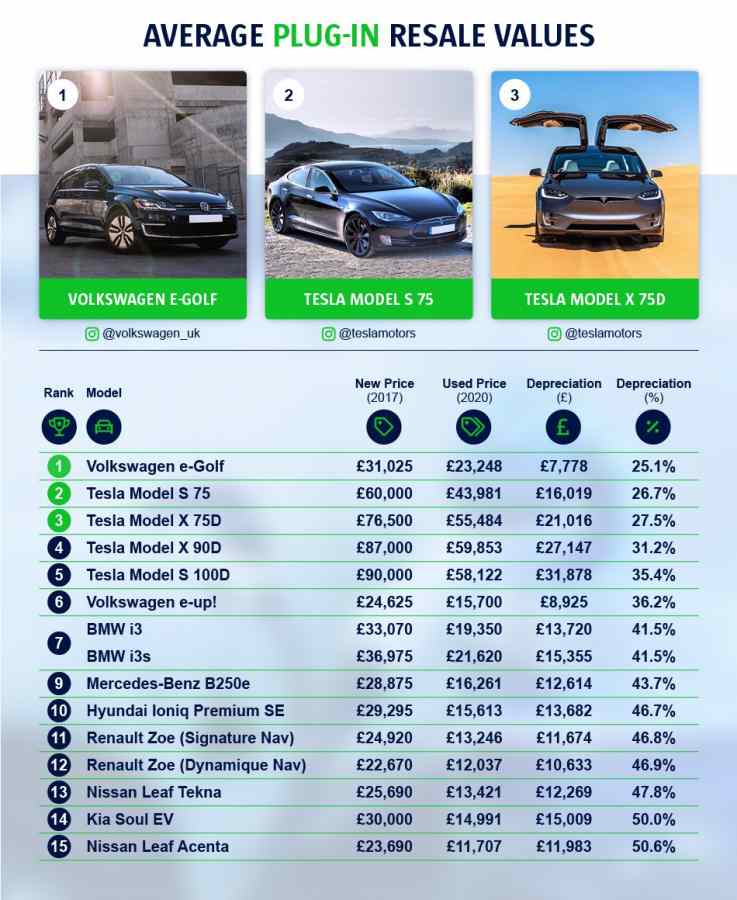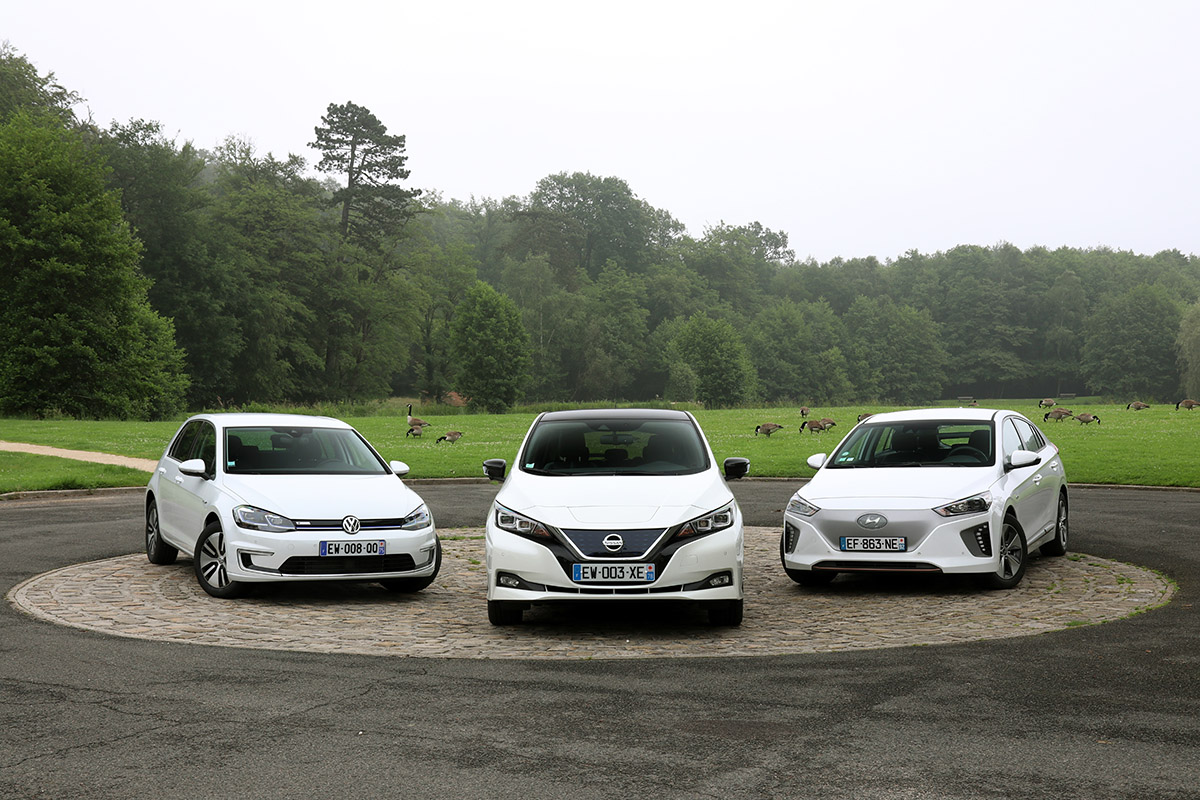One of the buyer’s main concerns when selecting a car is what residual value it will maintain over the years. Something that will allow you to change it for a new one represents less financial loss. Within electric cars, it is still without much data. Yet, now the British page Comparethemarket has published an exciting compilation where it shows us that the electric vehicle that loses the least value is a veteran, the Volkswagen eGolf.
Within three years of leaving the dealership, the popular electric Golf version managed to rank number one in the UK market for electric cars, with the depreciation of 7,778 pounds ($10,480), or just 25.1%, compared to its brand new price, 31,025 pounds ($41,810).

Quite an achievement for a model that recently ceased to be manufactured to give way to the new ID.3, which has taken the witness of a model that, despite being a conversion, has known how to play its cards to become one of the most popular electric cars of this new modern era.
Behind the eGolf, we find the Tesla models. The Model S 75 (26.7% depreciation) and the Model X 75D (with 27.5%). In this case also after three years from its launch. Something that explains why models such as the Model 3 itself do not yet appear, which, as we remember, arrived in Europe in 2019.
In the case of Tesla, the page indicates that one factor that helps maintain a low level of depreciation is their ability to receive online updates, allowing them to stay relatively up-to-date in terms of news. Something that impacts the vehicle’s residual value, which means that Tesla occupies four of the top five positions.
In the tail group, as those who have least managed to maintain their purchase value, we find models such as the Nissan LEAF in its Tekna finish, which after three years sees its sale price drop by 47.8%, followed in the third to last place by the KIA Soul, with a 50% depreciation, and the Nissan LEAF Acenta closes the list, which in just 36 months sees its value decrease by 50.6%.
It is interesting to see the enormous difference between the Volkswagen eGolf and the Nissan LEAF, first and last in the ranking respectively. Data that indicates the buyer who opted for the Golf will have lost 7,748 pounds (10,440 dollars at the exchange rate) in the value of their vehicle in 36 months. The buyer who has opted for the LEAF on the other hand has suffered a loss of 11,983 pounds (16,150 dollars), 54% more devaluation for the LEAF client than for the Golf client.
We say interesting since we are talking about two models that are very even technically. More than many might think. In its renewed version in 2017, the Golf has a 100 kW motor and a 35.8 kWh gross battery, or 32 kWh useful, which does not have any cooling like the LEAF. A LEAF that mounts a 110 kW motor and a 40 kWh gross battery, and 36 kWh useful, and of course, also without any cooling.
A list that helps us to see how the evolution of the second-hand market, except for some exceptions, is much better than expected, something that should translate into aspects such as better prices when dealing with operations such as renting, until now heavily burdened by the lack of data and resulting in too high prices.

